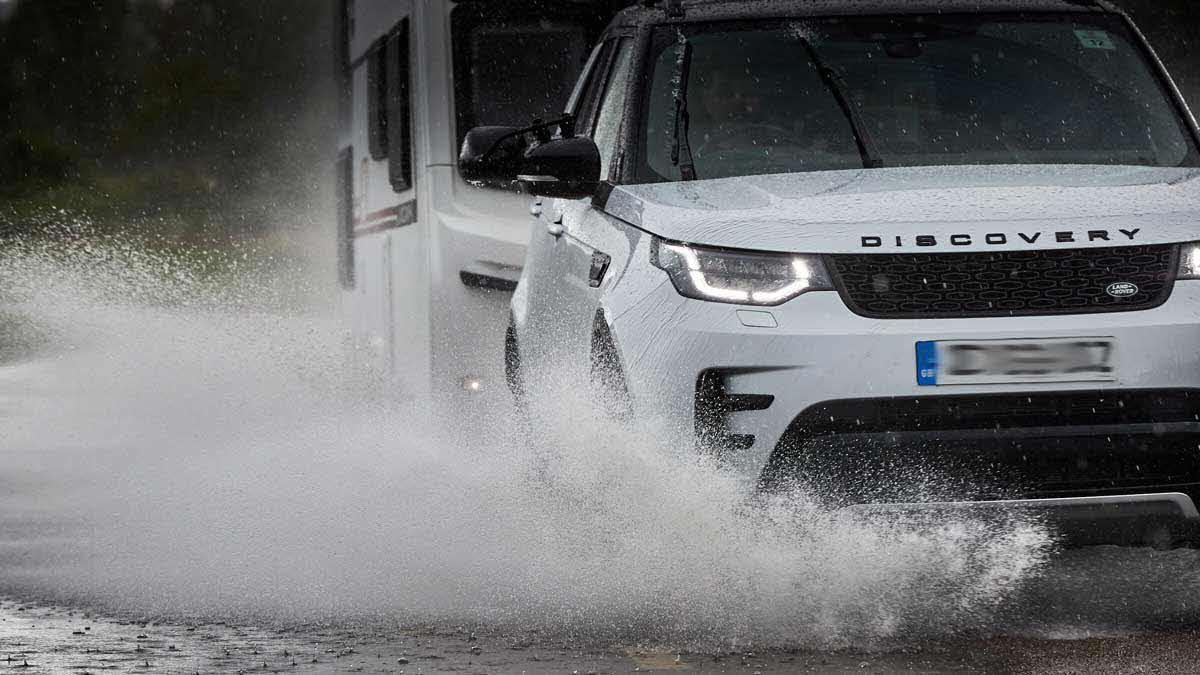Ready for storm warnings
We have had a lot of ‘named’ storms recently, bringing heavy rain or high winds across the UK. While we are hopefully looking forward to brighter skies ahead, it’s a good idea to plan for future storms and other extreme weather events you might encounter this year, before you set off on your holidays.

Sensible precautions can help you minimise risks while travelling. It’s much better for your journey to take a little longer, or to have to change your plans a bit, rather than unduly risking harm to yourself or your belongings. Consider the following:
- Plan in advance, monitoring weather and travel services before and during journeys. Can you time your journey to miss the worst conditions, perhaps leaving earlier or later, or even travelling on a different day in really extreme conditions? Where could you pause if conditions deteriorate? Is there an alternative to avoid exposed routes or bridges? Are vulnerable areas like high passes or major bridges open and are ferries running?
- Allow extra journey time, but it’s always better to arrive later than take undue risks.
- Prepare your outfit. Clean the windscreen and lights, making sure lights are working. Check tyre condition and pressure. Ensure fuel, oil, coolant and screen wash levels are adequate. Review how you’ve loaded the outfit. A less stable or overloaded caravan or motorhome is much more likely to be problematic if winds are high or surfaces slippery. Programme your sat-nav, then review its suggested route – adjust settings or add waypoints to force a safer if slower/longer alternative if required.
- Prepare yourself if driving. Anticipate poor visibility, longer stopping distances, slippery surfaces, standing water and gusting winds. Adopt a more defensive driving style and assume other drivers are less conscientious than you. Expect to have to concentrate more, so don’t set off tired. Take breaks and consider sharing driving duties. Slow down if conditions are poor. A-roads may be less stressful than motorways, especially in heavy rain or fog. Be especially alert for floods and fallen trees on minor roads.
- Help out if you’re a passenger. Let the driver concentrate on the road, but monitor traffic and weather reports by mobile, search for rest stops, and reprogram the sat-nav with alternative routes.
If you are on site, especially in high winds, try to pitch away from trees, do not leave loose items (e.g. chairs) outside, and think carefully before putting an awning up. Storm guys and storm straps will help keep an awning safe, but if you can, it’s often best just to take it down when a storm’s forecast.
Watch out for flying debris if you have to move around outside and be especially careful when opening doors. Keep windows and rooflights closed and securely latched.
Rain, mud and debris can make pathways and steps slippery. Take extra care and make sure your most appropriate footwear and outer clothing is accessible without going outside first.
Stay away from open water, steep slopes and cliffs or vulnerable trees and buildings which might shed debris or even collapse. This applies during and in the aftermath of a storm.
Remain inside during a lightning storm – within a permanent building is best, but your leisure vehicle or car is pretty safe as long as it has a metal shell, skin or substantial frame. Metal-framed tents and awnings are risky, though, as thin poles tend to concentrate rather than disperse a lightning strike.
Keep pets indoors (although do give your dog a short ‘call of nature’ walk before the storm hits!) Make sure they have an ID tag/microchip just in case they escape when scared. Music or TV can distract from the noise of the storm and find them a safe, cosy space (e.g. blankets for a dog or a high shelf for a cat).
By the way, if you want to suggest what a future named storm should be called, you can do so via the Met Office website.

Nationwide weather and traffic information services
- Met Office (weather forecasts, warnings, alerts)
- X (formerly Twitter) feeds: @metoffice, @metofficeUK (for weather warnings)
England weather and traffic information services
- Traffic England (traffic, roadworks, adverse weather)
- m.highwaysengland.co.uk/ (mobile-optimised website)
Many regional X (formerly Twitter) feeds
@HighwaysSEAST, @HighwaysSWEST, @HighwaysEAST, @HighwaysEMIDS, @HighwaysWMIDS, @HighwaysNWEST, @HighwaysNEAST, @HighwaysYORKS, @LowerThames
Highways England Live Traffic Info app available via Google Play and Apple App Store
Scotland weather and traffic information services
- Traffic Scotland (traffic, roadworks, adverse weather)
- X (formerly Twitter) feed: @trafficscotland
Wales weather and traffic information services
- Traffic Wales (traffic, roadworks, adverse weather)
- Regional X (formerly Twitter) feeds: @TrafficWalesN and @TrafficWalesS
Northern Ireland weather and traffic information services
- TrafficwatchNI (traffic, roadworks, adverse weather)
- X (formerly Twitter) feed: @TrafficwatchNI
